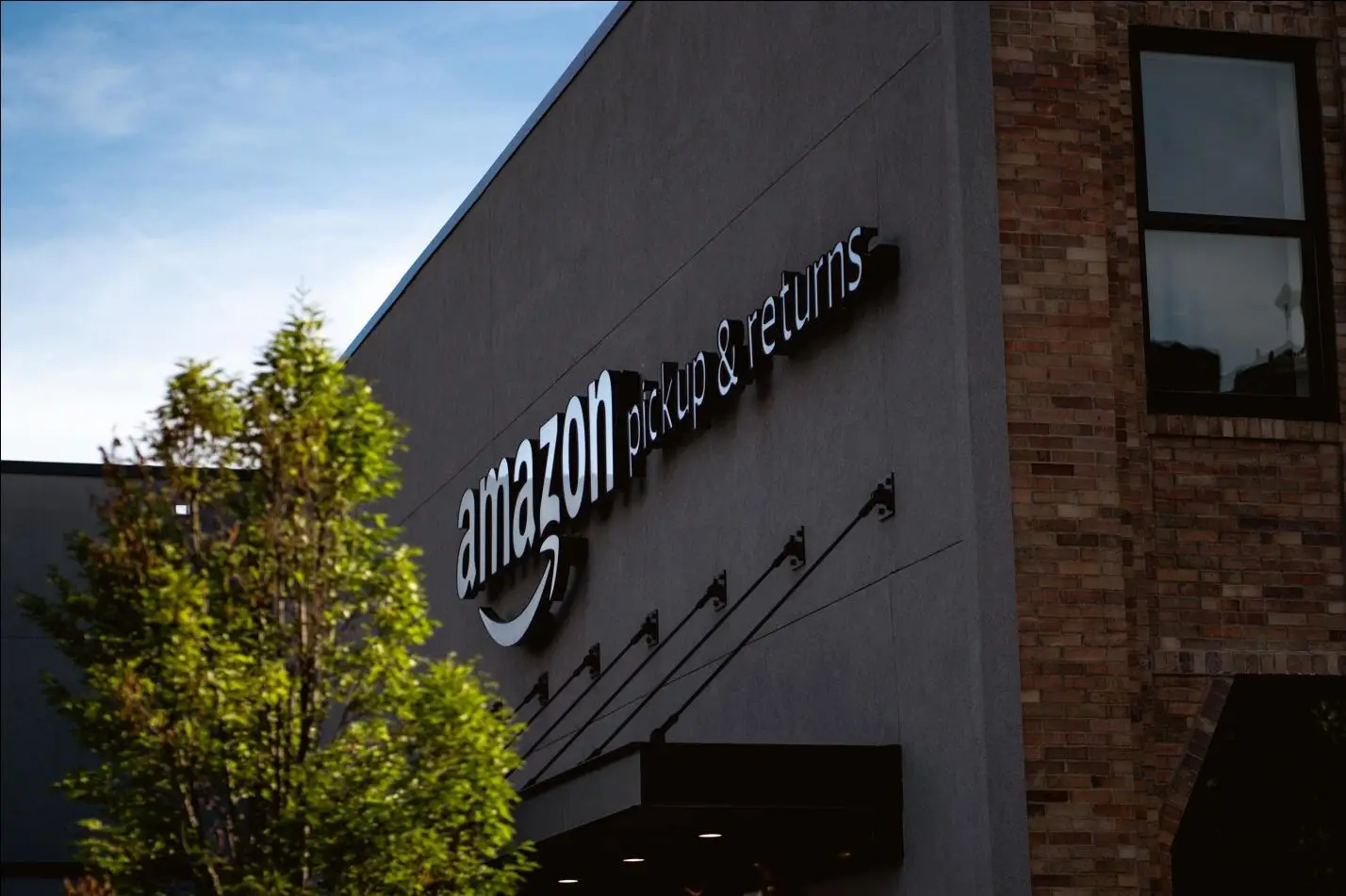While all online and offline sellers are required to pay sales tax, the obligation is a bit more complicated for Amazon FBA sellers.
For many years, Amazon has been successfully shielding its FBA sellers from the long arm of tax and revenue authorities. However, the retail giant’s never-ending growth and the drive to further improve efficiencies to offset investments urged the company to establish fulfillment centers in several states. This exposed Amazon to the sales tax nexus for each state it opened a warehouse in, making FBA sellers liable to pay Amazon sales tax. FBA sellers must understand their tax liabilities, the importance of reporting sales tax accurately, and how the sales tax rates vary based on the location of the customer and the inventory.
On top of that, the most recent changes in tax laws have completely changed how Amazon sellers are to ensure sales tax compliance.
Let our digital finance experts who specialize in done-for-you eCommerce accounting take all of the guesswork out of running your back office, financial planning, and complex eCommerce taxes by doing the work for you! Schedule a call, or request a proposal online now.
The following guide is for Amazon FBA sellers who wish to understand their Amazon FBA sales tax obligation and avoid audit risk.
Step 1: Determine Whether You Need to Collect Sales Tax Or Not
When it comes to paying sales tax, Amazon FBA sellers are treated no differently from other eCommerce sellers. To determine your sales tax obligations and whether you need to collect sales tax from customers, you should have a sales tax nexus in the state you’re selling, and the product you’re selling should be taxable. Let’s take a look at each of these individually:
Determine Where You Have Sales Tax Nexus
A sales tax nexus can be viewed as the criteria that tie your business to a state for sales tax purposes. You have a sales tax nexus in a state if you:
- Have a store, office, or any other physical place of business in it.
- You have employees, contractors, salespeople, installers, or someone else working for your business in some capacity in that state.
- Even if you don’t have an office or store, or personnel working in a state, storing inventory there for quick order fulfillment may establish a nexus with the state. This holds true for most states.
- Have a third-party drop-shipper who delivers your products in that state.
- Generate transactions or revenue over a pre-set threshold. While they can vary from one state to another, the transaction threshold is somewhere around 200, and the revenue threshold is around $100,000. This criterion is also referred to as ‘economic nexus.’
- Have an affiliate who works to advertise your items in that state.
- Sell products temporarily in that state, such as in a tradeshow or any other business event.
Sales tax laws, including marketplace facilitator laws, can impact nexus determination by simplifying the tax filing process for sellers on platforms like Amazon.
The third point, which relates to storing inventory in other states, is particularly relevant to Amazon FBA sellers. You’ll have a sales tax nexus in a state simply if your FBA inventory is stored in an Amazon fulfillment center. From the perspective of the states, a seller who utilizes its resources, such as roads for transportation, public safety, etc., should have a nexus.
It’s important to note that Amazon won’t likely have your products in each of its fulfillment centers. To determine where your inventory is stored, log in to your Seller Central and export your Inventory Event Detail Report.
As an Amazon FBA seller, you should also be aware of the recently passed Marketplace Facilitator Law. From October 1, 2019, onward, marketplaces such as Amazon, eBay, Etsy, Walmart, etc., were made responsible for collecting sales tax on behalf of their sellers. These laws simplify tax collection for sellers by making the marketplaces responsible for tax obligations, thereby alleviating individual merchants from the burden of tax management in those states.
Once you have established nexus a in a state, you must register and collect sales tax from all buyers from that state, regardless of the medium of sale. Hence, be sure to collect sales tax from buyers on all shopping carts on each marketplace you sell.
Determine Product Taxability
Once you’ve found which states you have nexus in, the next thing to look at is product taxability. This involves finding out whether your products or services are taxable in the states you’re selling or not. Like nexus criteria, different states have varying rules for which products are taxable and which aren’t. As a general rule, tangible products are taxable, while intangible products or services are non-taxable.
Some product categories, such as clothing, textbooks, and groceries, are taxed differently or considered non-taxable by some states. For instance, Tennessee charges a reduced tax rate of 5% for grocery products, while Minnesota regards clothing and grocery items as non-taxable. Sales tax rates can vary significantly based on the product category and the jurisdiction, such as district, city, county, and state levels. For example, a product might be subject to different sales tax rates in different cities within the same state.
To find out whether the products you sell are taxable or non-taxable in a particular state, call the state’s taxing authority or check the resources on their website.
Step 2: Register for a Sales Tax Permit
When you’ve found that you need to collect sales tax, you must obtain your sales tax permit for each state you sell in before you begin collecting sales tax. No matter how decent your intentions are, it’s considered illegal to collect sales tax in a state without a permit.
Upon receiving your sales tax permit, you’ll be assigned sales tax due dates and a sales tax frequency, which is normally annual, quarterly, or monthly, depending on your sales volume. The higher your sales volume in a state, the more often you’ll be required to file the sales tax. A state can alter the filing frequency based on any serious fluctuations in your sales volume.
To register for a tax permit with a state, visit its Department of Revenue website and follow the instructions given. Once you’ve registered for a sales tax permit, stay alert for any follow-up emails from the state Department of Revenue and any letters that arrive by mail.
Step 3: Collect Sales Tax from Amazon FBA Customers
As mentioned earlier, marketplaces are required to collect sales tax on behalf of their sellers, according to the Marketplace Facilitator Law. Amazon collects sales tax in various states, but there are states that do not enforce this law on marketplaces. This makes Amazon FBA sellers responsible for collecting sales tax in these states. If you don’t collect sales tax from customers, you’ll need to pay it from your profits. In this section, you’ll learn how to collect sales tax in states that don’t require Amazon to collect it on sellers’ behalf.
Amazon offers a valuable sales tax collection engine. So, all you need to do is tell the platform what you need to collect. It will collect the right amounts based on applicable rates, adapting to any changes in the tax rates. It also takes into account whether a state is ‘destination-based’ or ‘origin-based.’
The highly intelligent Amazon seller portal allows you to include product tax codes so the right sales tax amount is charged for categories like groceries and clothing. You also have the flexibility to charge or not charge sales tax on gift wrapping and shipping of items.
Follow these steps to get started:
Setting Things Up on Seller Central
To set up sales tax collection from your Amazon FBA customers, log in to your seller central and navigate to Settings < Tax Settings < View /Edit your Tax Collection and Shipping & Handling and Giftwrap Tax Obligations Settings.
On this page, you should be able to choose the states where you want to collect sales tax from, or even choose to collect sales tax at the local or county level. While you can also add a custom sales tax rate, avoid entering a custom rate because it’s subject to frequent changes.
The Seller Central requires sellers to enter their state-issued sales tax registration number before they can start collecting sales tax. This way, uninformed sellers won’t make the mistake of collecting sales tax without obtaining a sales tax permit.
It is also crucial to understand the frequency of sales tax filings, which vary by state. Some states require monthly submissions, while others may mandate quarterly, bi-annual, or annual filings. This frequency often depends on your sales volume and legal obligations.
Entering Product Tax Codes on Seller Central
Once you’ve configured the settings, return to the ‘Tax Settings’ page on Seller Central and select the ‘View Master Product Tax Codes and Rules’ option. This is where you choose product tax codes that apply to the products you sell, which is crucial for complying with sales taxes.
For apparel, you’ll need to select ‘A_CLTH_GEN’ as the tax code. In the states where clothing is non-taxable, there might still be some variants that might be taxable, such as athletic wear, formal wear, accessories, etc. For instance, if costumes are taxable, choose ‘A_CLTH_CSTUMS,’ and for handbags, select ‘A_CLTH_HBAGS.’
If you sell food items, you’ll again have to choose the right tax codes because not all food items are taxed equally. To give you an idea, the tax code for carbonated soft drinks is ‘A_FOOD_SFTDK,’ while that for candies is ‘A_FOOD_CNDY.’
If you can’t find a tax code for a product you sell, it doesn’t necessarily mean that the product is not taxed. It just means that the product is not taxed specifically. You can use the ‘A-GEN-TAX’ code in that case.
Step 4: Report Your Collected Amazon FBA Sales Tax
As the due date for filing your Amazon FBA sales tax draws nearer, you should complete the collection process and report the collected amount to the relevant state Department of Revenue. Many states will require you to sort the amount by country, the city as well as by the taxing district where your customers reside.
To report your collected Amazon FBA sales tax, download the relevant report from Amazon Seller Central. Go to ‘Reports,’ select ‘Payments,’ and click on ‘Generate Data Range Report.’ Set the sales tax filing period and slice and dice the info to sort the collection amounts from each county, city, or state. This is a complicated and time-consuming job, so be prepared for it.
It is also important to use a combined sales tax report to track and understand your sales tax obligations across different jurisdictions. This report provides a comprehensive breakdown of sales tax collected at various levels, aiding in reporting requirements.
Alternatively, you can hire an accounting consultant to handle the sales tax reporting and filing process. An accounting company that specializes in eCommerce accounting, such as Fully Accountable, will take care of all your accounting and taxation needs and streamline your process.
Step 5: File Your Amazon FBA Sales Tax
Now, you’re all set to file your Amazon FBA sales tax. You can file your returns by logging into your state Department of Revenue website or using a sales tax automation solution.
Regardless of the method you choose to file your Amazon FBA sales tax returns, be sure to file and remit sales tax wherever you have a sales tax permit, even if Amazon collected and remitted the sales tax on your behalf. Most states require sellers holding a sales tax permit to file sales tax, mentioning how much sales tax their marketplaces filed on their behalf. This becomes increasingly confusing if you sell on multiple marketplaces as well as offline. Again, an eCommerce accounting expert should be of great help.
Also, keep in mind you need to file a sales tax even if you collected no tax during the taxable period. You’re still required to file ‘zero returns.’ If you fail to file your sales tax returns by the deadline, the state will impose a fine on you. They may even cancel your sales tax permit if the sales tax remains unfiled for several periods in a row.
In addition, don’t let go of the free money available in the form of discounts. More than half of the US states allow you to retain around 1% to 3% of the tax you’ve collected as a reward for collecting and filing the sales tax.
Final Word
As an Amazon FBA seller, you may feel overwhelmed by the amount of work involved in preparing for, reporting, and filing the Amazon FBA sales tax. Unfortunately, you don’t have a choice but to pay the tax, especially after the spread of Amazon fulfillment centers in a number of states. It’s important to note that income tax is different from sales tax; while sales tax is collected on transactions, income tax is based on your net earnings and requires annual filing to comply with tax laws.
If you think you won’t be able to handle the process, connect with the Fully Accountable team by scheduling a call.
We do the work for you!


